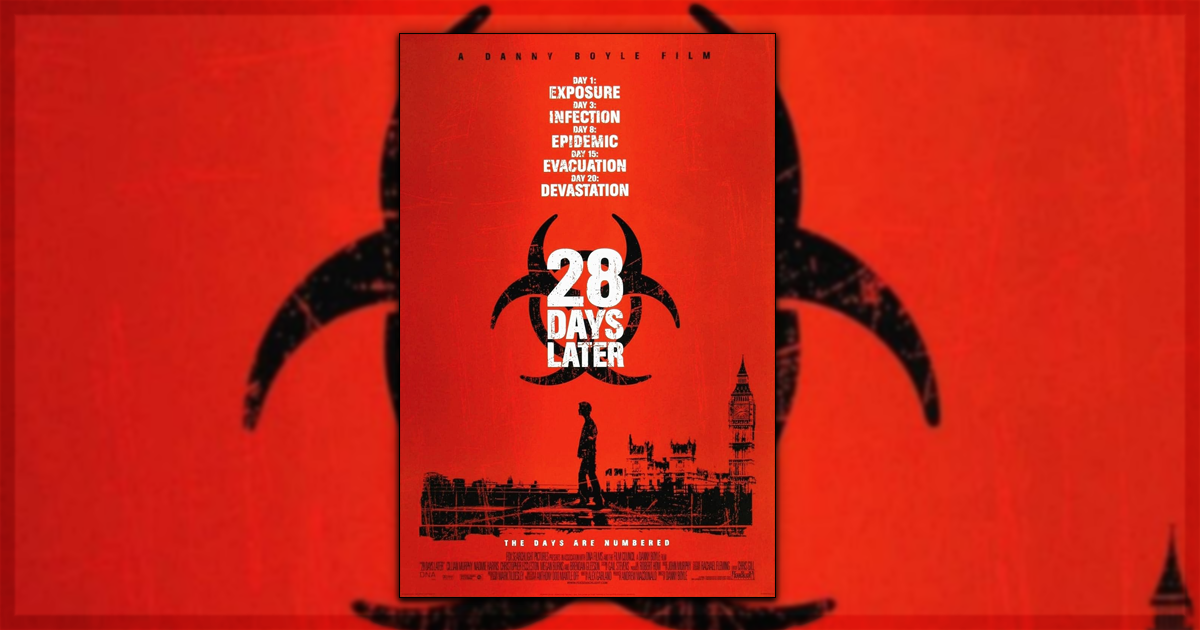In both film and television, Zombies have become an iconic part of the entertainment culture. Ever since 1968’s Night of the Living Dead, zombies have carved a niche for themselves. The tension, gore, and general terror of those stories have resonated with audiences. Recent examples, such as The Walking Dead and The Last of Us, have helped sustain the love for scary creatures. Now with the genre alive as ever, theatrical stories are dipping their toe back into the iconic and terrifying world. The start of theatrical horror made a splash with 2002’s 28 Days Later.
This newly released film, 28 Years Later, hopes to capitalize on the success. With a sequel titled 28 Years Later: The Bone Temple already filmed and set for 2026, Sony Pictures hopes a new franchise can take shape. What many may forget with these new films is the series humble beginnings. The low-budget indie film 28 Days Later (and the starting gun of the franchise) helped start the trend.
28 Days Later follows the story of a man named Jim (a young Cillian Murphy), a bicycle courier, who wakes up from a coma. As Jim wanders the deserted streets of Great Britain, he discovers something has gone wrong. He finds that an aggressive virus, coined “the rage virus,” has overtaken the nation. Finding out that society has fallen, Jim comes face-to-face with rage-filled humans turned monsters that could be classified as “zombies.” Along Jim’s journey of survival, he uncovers a variety of survivors.
These included Selena (Naomie Harris), a chemist and tough-as-nails fighter, and Frank (Brendan Gleeson), a Taxi driver, and his young daughter Hannah. As the makeshift group travels across the UK, their fight for survival takes dark turns. This includes both the undead and fellow survivors with their own agendas. What follows is a relentlessly bleak and violent tale of survival. It’s the sort of zombie tale that couldn’t be made in the modern film world today. This can first and best be discussed from a technical standpoint.
Shot entirely on digital video camcorders, the film has a grimy aesthetic. In many cases, it feels more like a “found footage” movie. That makes the finished product appear unappealing and grimy to the eye. As someone who had never seen the film before, it was admittedly an off-putting sensation from the start. Some could even say that the film is visually ugly from start to finish. It’s an understandable feeling that could deter viewers from watching the movie at all. Within the first third of the film, that feeling left me completely disconnected from the story.
As the film progressed, it became clear that the visual language was the point. 28 Days Later means to throw its audience off its axis. The filmmaking is chaotic, gory, and visually drab. There is no humanity in this story, but a dissection of the violence people are capable of. Such a prospect is more than just the violence of the zombies or the gore they commit. It’s the violence humanity is capable of when the world crumbles. Being released in 2002, that complexity was a novel conceit. It crafts a story that asks its audience, what would you do in the face of anarchy? Those questions make this zombie film stand above the crowd.
28 Days Later’s themes and ideas are showcased through the performances. To be clear, these characters are not the most in-depth. If anything, they’re ideas and not fully fleshed out human beings. Each character is about how an idea of how people perceive the end of the world, and what they’re willing to do to survive it. The results deliver compelling performances without making the story an acting showcase. It’s a subtlety that’s difficult to accomplish, making the performances all the more resonant. A constant like this crafts a zombie story that feels wholly original. That includes even the supporting characters, leaving them in a morally grey area.
What some may view as the “saviors” in this story may be more villainous than they appear. None of those characters are out to save the world or each other, but save themselves. Even in the visually unappealing action set pieces, the film wisely portrays these characters as looking out for their own interests. It makes the viewing experience taxing, yet also emotionally charged. Therefore, delivering a “zombie film” in a realistic way that has not been offered since. That conveyed sentiment has to be credited to director Danny Boyle.
Boyle has been vocal about not considering 28 Days Later a zombie film. Instead, the story is a character-driven drama. Viewing the movie in that way makes it all the more terrifying. It feels like society wouldn’t know what to do in the face of disaster. Examining the film now in a post-COVID-19 pandemic world, those ideas still resonate.
28 Days Later did more than reinvigorate the zombie genre. It instead made something much more profound. Its visually ugly look gives the story a real sense of place and realism. Applying that makes the story have a real heft that feels surprising. What can’t be stressed enough is that 28 Days Later is by no means enjoyable. It’s a mean-spirited, dark, and brutally violent story. The undeniable truth is that those themes and ideas are wholly effective and still resonate in 2025. As a first-time viewer, it’s hard to deny the efficiency of the story, even if it couldn’t be classified as a “fun” movie. Though I’d be lying if I said I was not left wanting more within this world.


